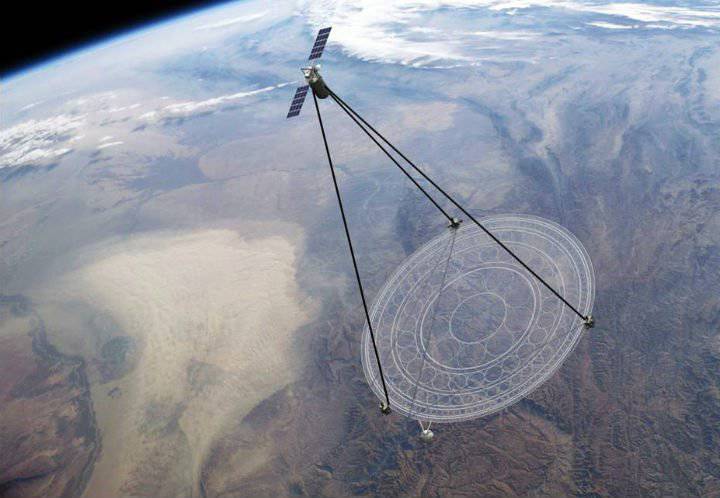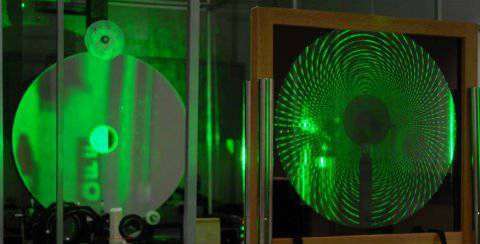In the United States will be built the latest spy satellite

According to the designers, the use of ultrafine diffractive optics will help simplify and cheapen the observation satellite. At the same time he will be provided with the most unique opportunities (illustration DARPA).
The newest satellite will have to provide direct video surveillance during the day for the most important military objects of heightened interest on the surface of the Earth. Very unusual optical devices will be used. However, the engineers announced only a demonstration model and a flight prototype.
It is engaged in the development of a project called “Membrane Optical Imaging System for Real-Time Operation” (Membrane Optical Imager for Real-Time Exploitation - MOIRE), the research bureau of the US military “DARPA”.
Developers threatened a far from simple task. After all, everyone is well aware that spy satellites when photographing in low orbits provide images of an object of extremely high resolution. However, they fly over the target very quickly, and they are already doing a little bit away from the necessary object. Behind one or other areas of the Earth a continuous monitoring could be carried out by a geostationary satellite. Although it is very difficult to imagine how exactly from such a distance (and this is about 36 thousands of kilometers) satellite video equipment will be able to detect on the earth’s surface anything worthwhile for the military.
Thus, there is a need to build a large flying telescope. In the case of the use of classical technologies, its size and weight will be huge. The project "MOIRE" (this word, by the way, is translated literally as "moire") offers a very original development.
The Americans intend to use an extremely thin and light membrane with a diameter of 20 meters as the main lens of the telescope. On this lens it is planned to engrave a diffraction “moire pattern”, which provides focusing of the light on the lens of the video camera.

The quality of the resulting image should not be called a record. The resolution of one pixel will cover about three meters on the earth's surface. However, this will be quite sufficient for tracking down the movement of mobile rocket launchers or for fixing launches of tactical ballistic missiles.
The telescope will be able to function in the visible and, most likely, in the infrared range. Development of a membrane that can focus light in a wide range of frequencies is one of the main objectives of the program. The complex will be able to fix the area on Earth with an area of over one hundred square kilometers. And, not least, the device will not be required to issue individual images, but to transmit in real time, transmit a video stream of at least one frame per second to ground stations.
As planned, the final version of MOIRE must fix the launch of the ballistic missile with an accuracy of 99%. In this case, false alarms should be less than one per month.
According to the program participants, the cost of each such satellite will cost no more than 500 million dollars. It’s too early to talk about a more accurate price, since it’s not even known exactly when the first MOIRE will be on duty.
Ball Aerospace, the main contractor of the program, demonstrated the first test sample of large membrane optics in the summer of 2011. And in the autumn of the same year, the second phase began: the construction and construction of a five-meter ground section for a telescope.
As for the third phase, it provides for the construction of a prototype of an entire telescope with an 10-meter lens-membrane. American scientists will conduct its tests already in earth orbit. And the final phase is the creation of a full-size model.
Information